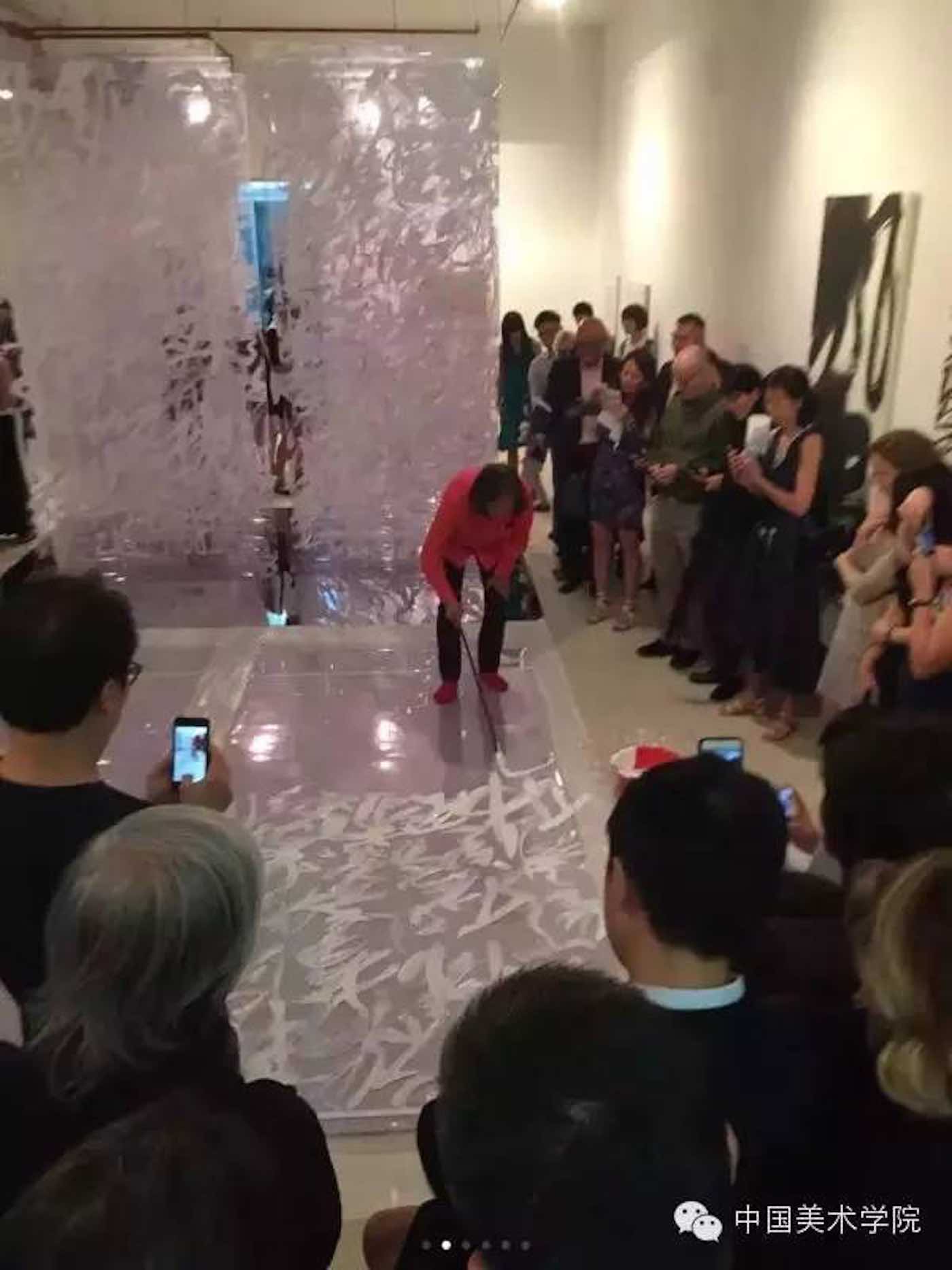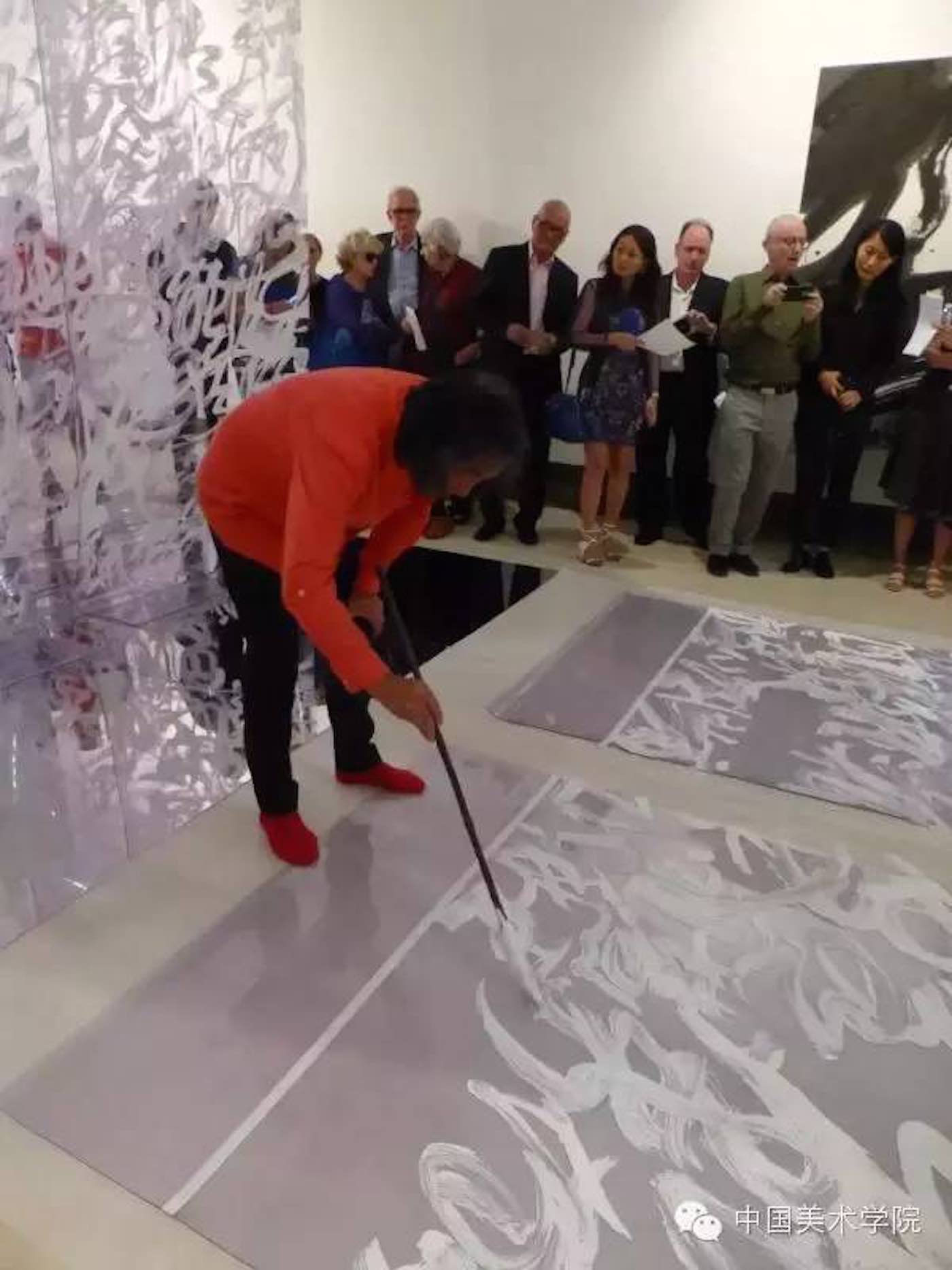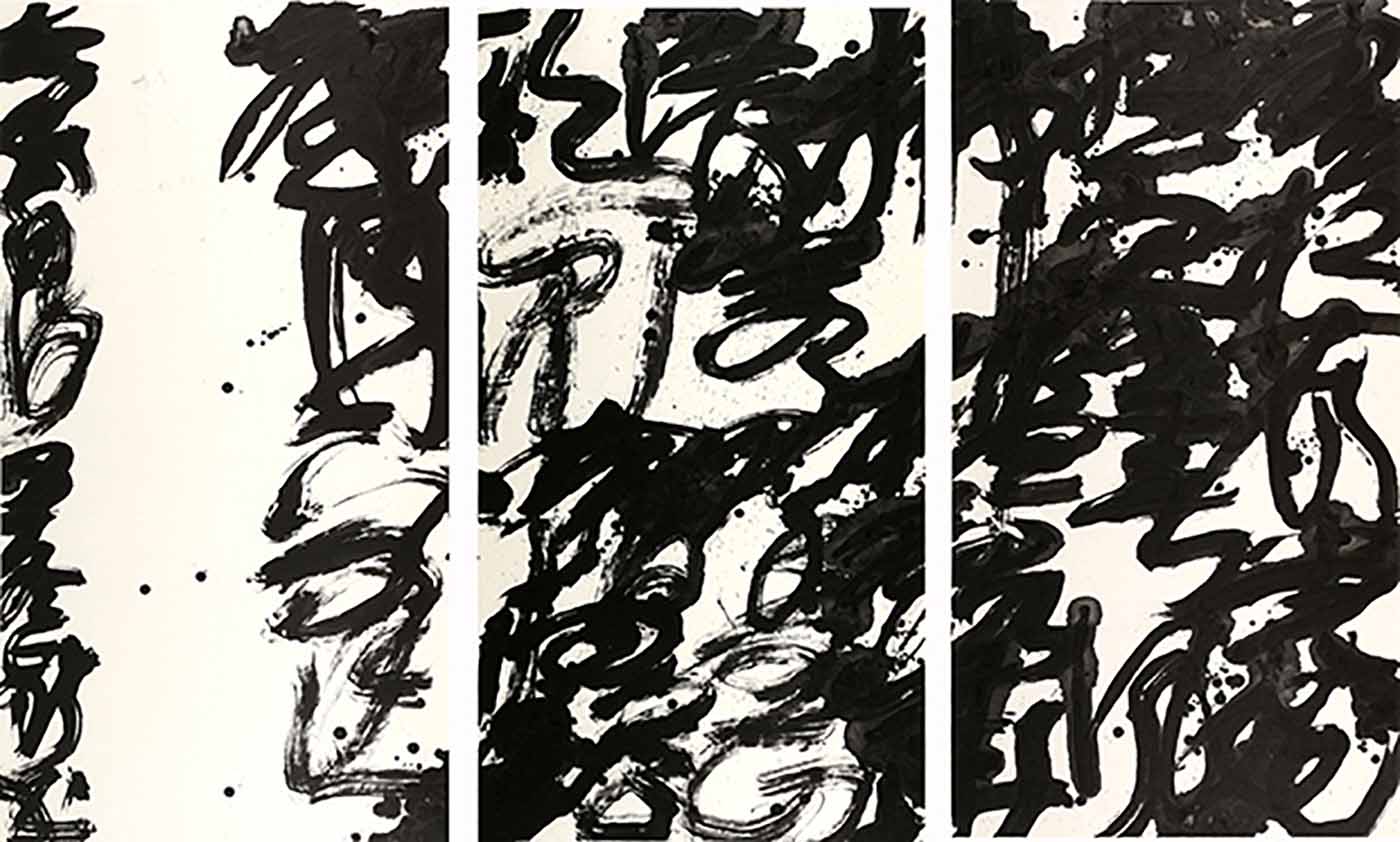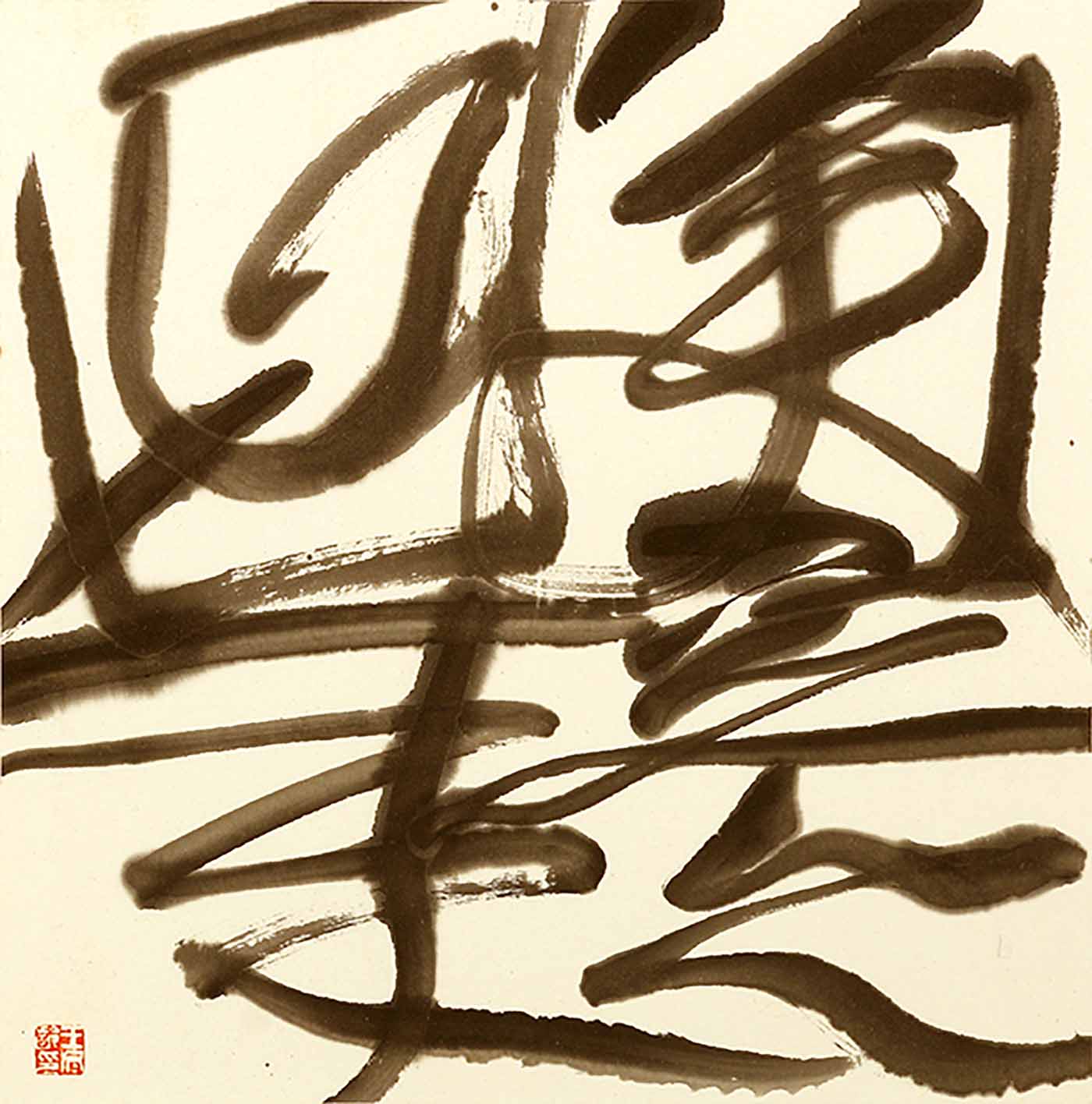Recent works by Wang Dongling
Curator: Zheng Shengtian
Date: September 12 – October 24, 2015
Address: 522 West 19 Street, New York
Professor Wang Dongling had also gave a calligraphy demonstration during the opening reception at 5 PM.
Chambers Fine Art is pleased to announce the opening On September 12, 2015 of wang Dongling: New Works. Wang Dongling (b.1945 in Rudong, Jiangsu Province) is currently Director of the Modern Calligraphy Study Center at the National China Academy of Art, Hangzhou, China and is one of China’s foremost living calligraphers.Calligraphy is one of the oldes living art traditions in the world and Wang has been initimately associated with it since early his career studying with the master Lin Sanzhi (1898–1989). It was from the classical training he received under Lin that the acquired the confidence to experiment with ways in which the calligraphic stroke might be liberated from the simultaneous conveyance of meaning.
This tendency became even more pronounced during the three years he spent as a visiting Professor at the University of Minnesota and the University of California, Santa Cruz between 1989 and 1991 when he was first exposed to contemporary Western painting. Although never directly influenced by Western abstraction, Wang was certainly affected by the scale of much of what he saw and the willingness by American and European artists of the 1950s and 1960s to take risks, never more pronounced than in the break-through works of the Abstract Expressionists.
In the new body of works dating from 2015 in the Present exhibition,Wang has achieved a new 1evel of freedom of expression. Although they refer to poems and texts from the Tang and Song dynasties sometimes just focusing on several characters the meaning resides in the unmistakable character of Wang’s calligraphy. Whether nearly filling the sheet of paper or canvas with dense accumulations of brush strokes or less densely applied skeins of strokes of varying degrees of intensity, Wang’s calligraphies are immediately recognizable. In a discussion of this form of calligraphy, critic Gao Shiming has observed that “writing becomes pure trace. Thus the corporality and the gesture of writing becomes the essence.
Contrasting with the traditional medium of the works in ink on paper and canvas will be a new series of works in acrylic on polyvinyl, in which the transparent nature of the ground creates a new spatial dimension for the artist’s calligraphy.The skittering traces of Wang’s calligraphy exist not in the fictive space of his works on paper but in the consequently affected by changes in light and other chance occurrences. The artist will give a demonstration of his calligraphy in acrylic on polyvinyl at the opening-reception September 12th.
Among many others, Wang’s work is included in the collections of the Metropolitan Museum of Art, New York; the Solomon R. Guggenheim Museum, New York; the British Museum, London; the Palace Museum, Beijing; and the National Art Museum of China, Beijing. Art Museum of China, Beijing.





